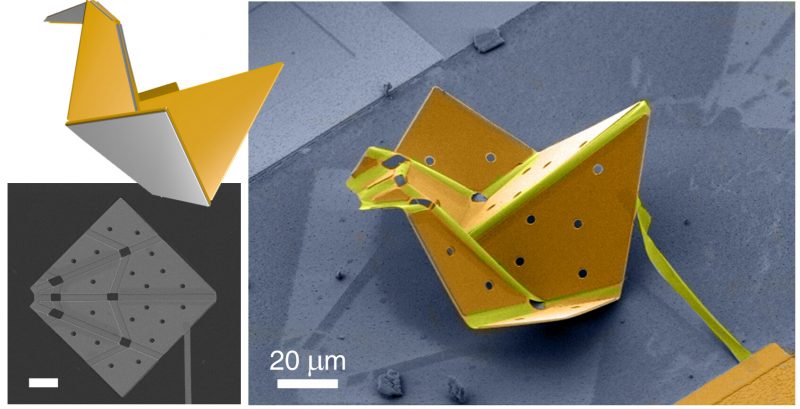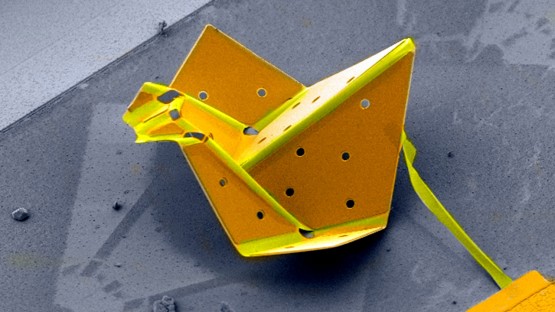Cornell creates the world’s tiniest self-folding origami bird

Cornell University has just announced what may be the smallest origami bird ever folded. While a typical origami animal is the product of an artist’s dexterous hands, the Cornell bird was folded by the strategic application of small electrical voltages. It had to be: The material of which the bird is comprised is just 30 atoms thick.

Creative expression isn’t the point of the university’s little avian — its construction previews principles and techniques that will lead to new generations of moving, nano-scaled robots that “can enable smart material design and interaction with the molecular biological world,” says Dean Culver of the U.S. Army Combat Capabilities Development Command’s Army Research Laboratory, which supported the research.
According to Cornell’s Paul McEuen, “We humans, our defining characteristic is we’ve learned how to build complex systems and machines at human scales, and at enormous scales as well. But what we haven’t learned how to do is build machines at tiny scales. And this is a step in that basic, fundamental evolution in what humans can do, of learning how to construct machines that are as small as cells.”
The lead author of the paper describing the tiny bird is postdoctoral researcher Qingkun Liu. The paper, “Micrometer-Sized Electrically Programmable Shape Memory Actuators for Low-Power Microrobotics,” is the cover story of the March 17 issue of the journal Science Robotics.
A minuscule swarm of helpers
The project is the result of a collaboration between physical scientist McEeuen and physicist Itai Cohen, both of Cornell’s College of Arts and Sciences. It’s already resulted in a (very) small herd of nanoscale machines and devices.
Cohen explains, “We want to have robots that are microscopic but have brains on board. So that means you need to have appendages that are driven by complementary metal-oxide-semiconductor (CMOS) transistors, basically a computer chip on a robot that’s 100 microns on a side.”
The idea is that these minuscule workhorses—a metaphor, no nanoscale origami horses yet exist—are released from a wafer, fold themselves into the desired form factor, and then go on about their business. Additional folding would endow them with motion as they work, change shapes to move their limbs and manipulate microscopic objects. The researchers anticipate that these nanobots will eventually be able to achieve similar functionality to their larger brethren.

